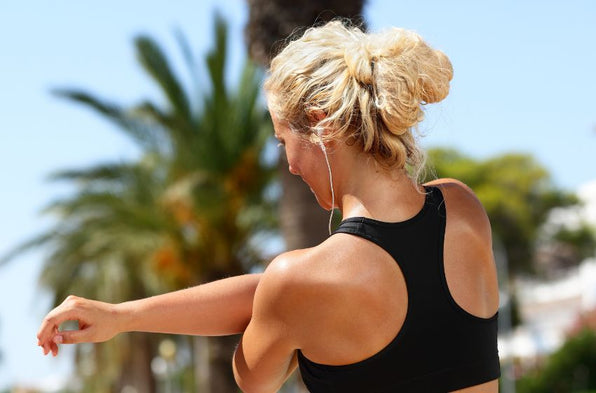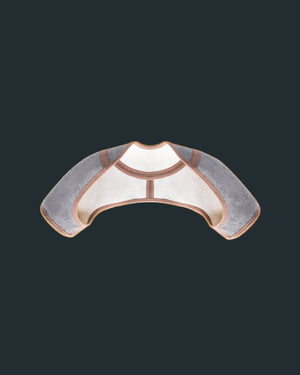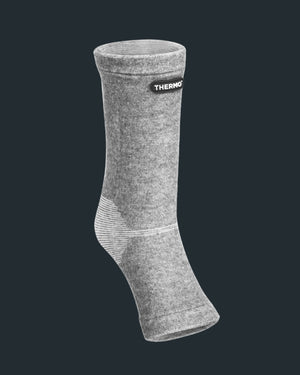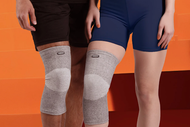Discover 10 easy stretches for runners to avoid injury. Enhance your running performance, increase flexibility, and reduce the risk of injuries.
Every runner knows that a good stretch can make all the difference. Implementing easy stretches into your routine plays an essential role in preventing injuries, enhancing performance, and ensuring an overall smooth running experience.
This guide will discuss easy stretches for runners to avoid injury, focusing on key muscle groups that are crucial for maintaining your stride. Both amateur joggers and professional marathoners will find these stretching exercises beneficial in keeping them on track and injury-free.
While implementing the following stretches, remember to utilize the Thermo Recovery Wear, which can reduce pain by up to 62%.
10 Easy Stretches to Reduce Injury Risk for Runners
Unleashing your potential as a runner is not just about clocking miles. It's also about incorporating essential stretching exercises into your routine.
By dedicating time to these easy stretches, you'll not only improve your flexibility but also drastically reduce your risk of running-related injuries.
1. The Hip Flexor Stretch
The Hip Flexor Stretch is a powerful yet simple exercise specifically designed to target and loosen the hip flexors and the quadriceps. Runners often experience tightness in these areas, particularly after long runs or intensive training.
Regularly practicing this stretch can significantly improve your hip mobility, enhance your running efficiency, and reduce the risk of overuse injuries.
How to Do
Start in a kneeling position with your right knee on the ground and your other leg planted in front of you. Ensure your left knee is at a 90-degree angle. Gradually push your hips forward, keeping your upper body upright and your hands on your left knee for support. You should feel a stretch in your right hip flexor. Hold for 20-30 seconds, then switch legs and repeat.
2. The Seated Hamstring Stretch
The Seated Hamstring Stretch is a fantastic exercise that primarily targets the muscles in the back of your thighs — the hamstrings. A staple in any runner's stretch sequence, it promotes flexibility, reduces muscle tension, and aids in preventing running injuries such as hamstring strain, which can sideline a runner for weeks.
How to Do
Begin by sitting on the ground with both legs extended in front of you, feet shoulder-width apart. Lean forward from your hips (not your waist) and reach for your toes.
Just remember, the aim is not to touch your toes but to feel a gentle stretch in your hamstrings. Hold the stretch for 20-30 seconds, relax, and then repeat a couple more times.
3. The Downward Dog
The Downward Dog, a pose borrowed from the practice of yoga, is a comprehensive position that stretches various muscle groups simultaneously. It's particularly beneficial for runners as it stretches the hamstrings, calves, and foot arches, all of which are areas prone to tightness in runners. It also strengthens the upper body, improving overall athletic performance.
How to Do
Start on your hands and knees, hands slightly forward of your shoulders. Lift your knees off the floor and raise your hips, straightening your legs and arms into an inverted "V" shape.
Press your heels into the ground and your chest towards your legs. Hold the pose for 20 to 30 seconds while taking deep breaths. Then, return to the starting position and repeat the exercise.
4. The Heel Lifts
Targeting the calf muscles, the Heel Lifts stretch can improve your lower leg muscular strength and increase ankle mobility. Given that these muscles can take a beating during runs, this exercise is an excellent preventive measure against calf strains.
How to Do
Stand upright, feet hip-width apart, and slowly rise to your tiptoes. Hold this position for a moment, then lower your heels back to the ground. For added balance and support, perform this exercise near a wall or a sturdy object. Repeat for about 20 to 30 times.
5. The Single-leg Deadlift
The Single-leg Deadlift focuses on your lower back, glutes, hamstrings, and core. This functional exercise promotes better balance, a crucial aspect of efficient running, while also strengthening vulnerable areas against injury.
How to Do
Stand on your left leg, keeping your core engaged. Bend at your hips and extend your right leg behind you while lowering your upper body parallel to the floor.
Maintain a slightly bent knee in your standing leg. Return to the standing position without touching your free foot to the ground. Complete the set and then switch legs.
You can use kettlebells or dumbbells to make this exercise extra stretchy.
6. The Bridge
The Bridge exercise targets your glutes and hip flexors while also engaging your core. Strengthening these areas helps maintain proper running form and prevents overuse injuries.
How to Do
Lie on your back with your knees bent and feet flat on the floor. Lift your hips by squeezing your glutes until your body forms a straight line from shoulders to knees. Hold for a few seconds before slowly lowering back to the starting position.
7. The Side Plank
This exercise is great for enhancing core and hip stability, which is crucial for maintaining good form during long-distance running. The Side Plank targets your obliques, glutes, and adductors.
How to Do
Begin in a seated position, then turn to one side (say the right side), placing your hand on the ground. Extend your legs and stack your left foot over your right foot, then lift your hips from the ground, stabilizing your body on your hand and the side of your bottom foot. Maintain a straight line from head to feet. Hold for a few seconds, then switch sides.
8. The Butterfly Stretch
A proper Butterfly Stretch can help keep the inner thigh muscles flexible, advancing stride and preventing injury. These muscles, known as adductors, can often be overlooked despite their crucial role in stabilizing runs.
How to Do:
Sit with your back straight and bring the soles of your feet together in front of you, allowing your knees to drop out to the sides.
Gently use your hands or elbows to push down on your knees until you feel a stretch in your inner thighs. Hold the stretch for about 20-30 seconds and release. Repeat a few times for best results.
9. The Lying (Supine) Spinal Twist
The Lying Spinal Twist is all about stretching your glutes, lower back, and chest. For runners, this stretch can alleviate stiffness from the lower back and chest area, enhancing aerobic capacity and running posture.
How to Do
Lie on your back with your arms extended out to the sides. Bend your knees and roll them to one side, keeping your shoulders flat on the floor.
Turn your head to the opposite side for a complete upper-body stretch. Hold for a few seconds before returning to the starting position and repeating on the other side.
10. The Sitting Shin Stretch
The Sitting Shin Stretch targets the front of your lower legs, the often overlooked shin muscles. This stretch can help prevent shin splints, a common running injury.
How to Do
Kneel on a soft surface with your legs and feet together, and sit back on your heels. Gently lean back and lift your knees off the floor, feeling the stretch in your shins and the top of your feet. Hold for about 20-30 seconds, then relax and repeat a few times.
Final Words
Incorporating these 10 easy stretches into your routine can make a significant difference in your running performance and injury prevention. Remember, consistency is key. Allow your body to gradually adapt, and over time, you'll reap the full benefits of these stretches.
Pair these stretches with Thermo Recovery Wear to maximize your body’s ability to recover. Ready to recover safely and naturally? We invite you to check our storefront to see what we can offer you.





